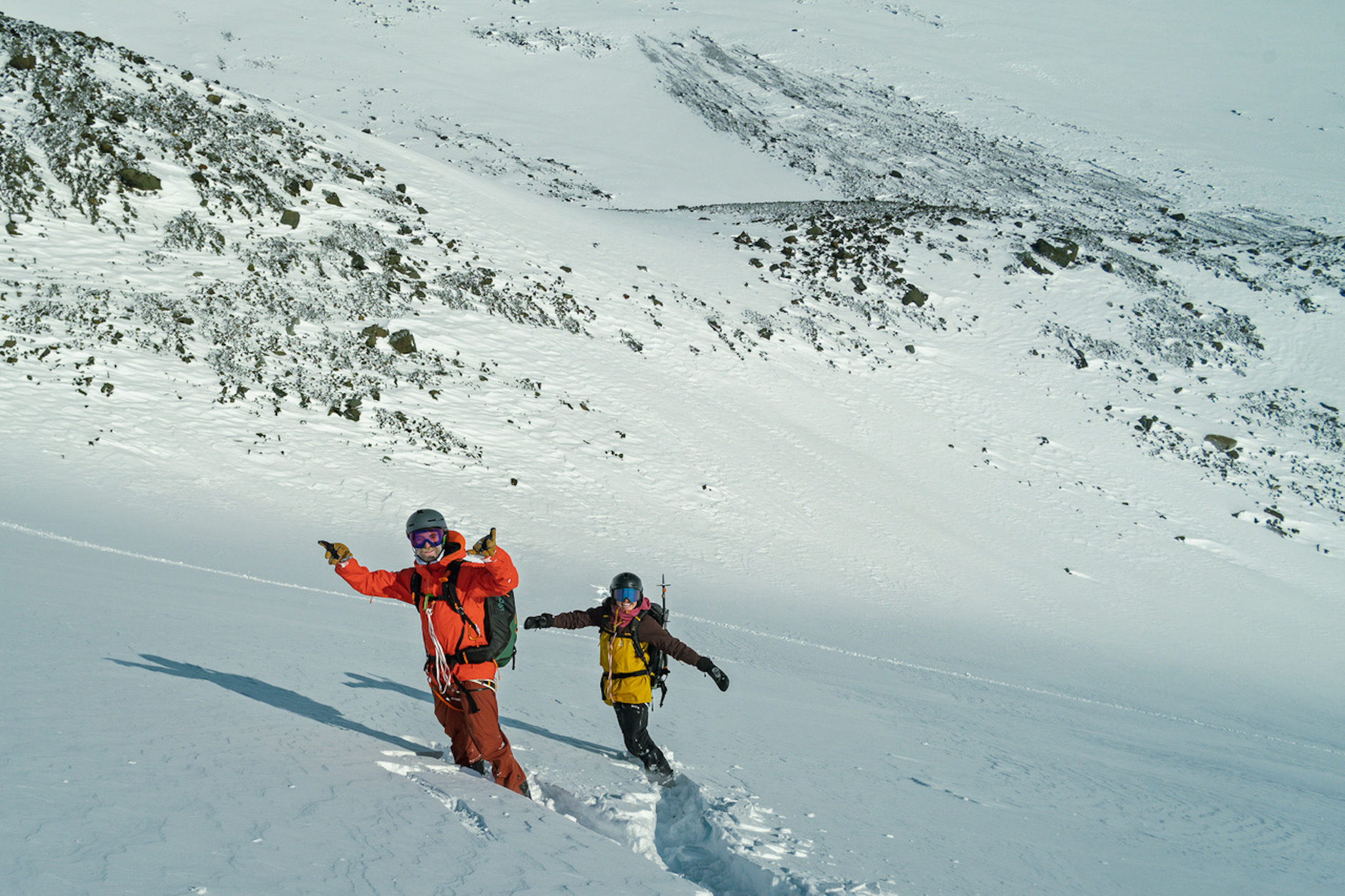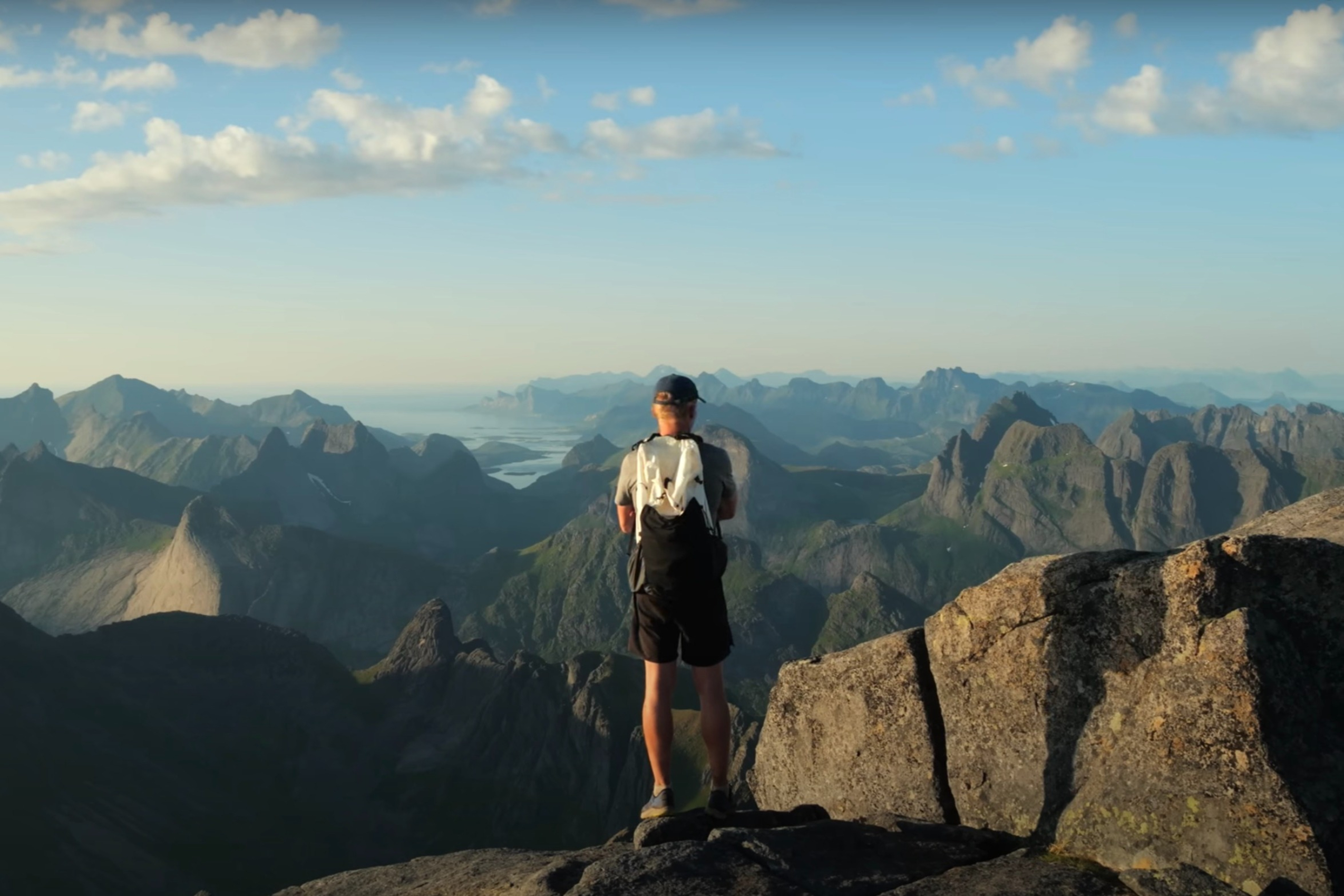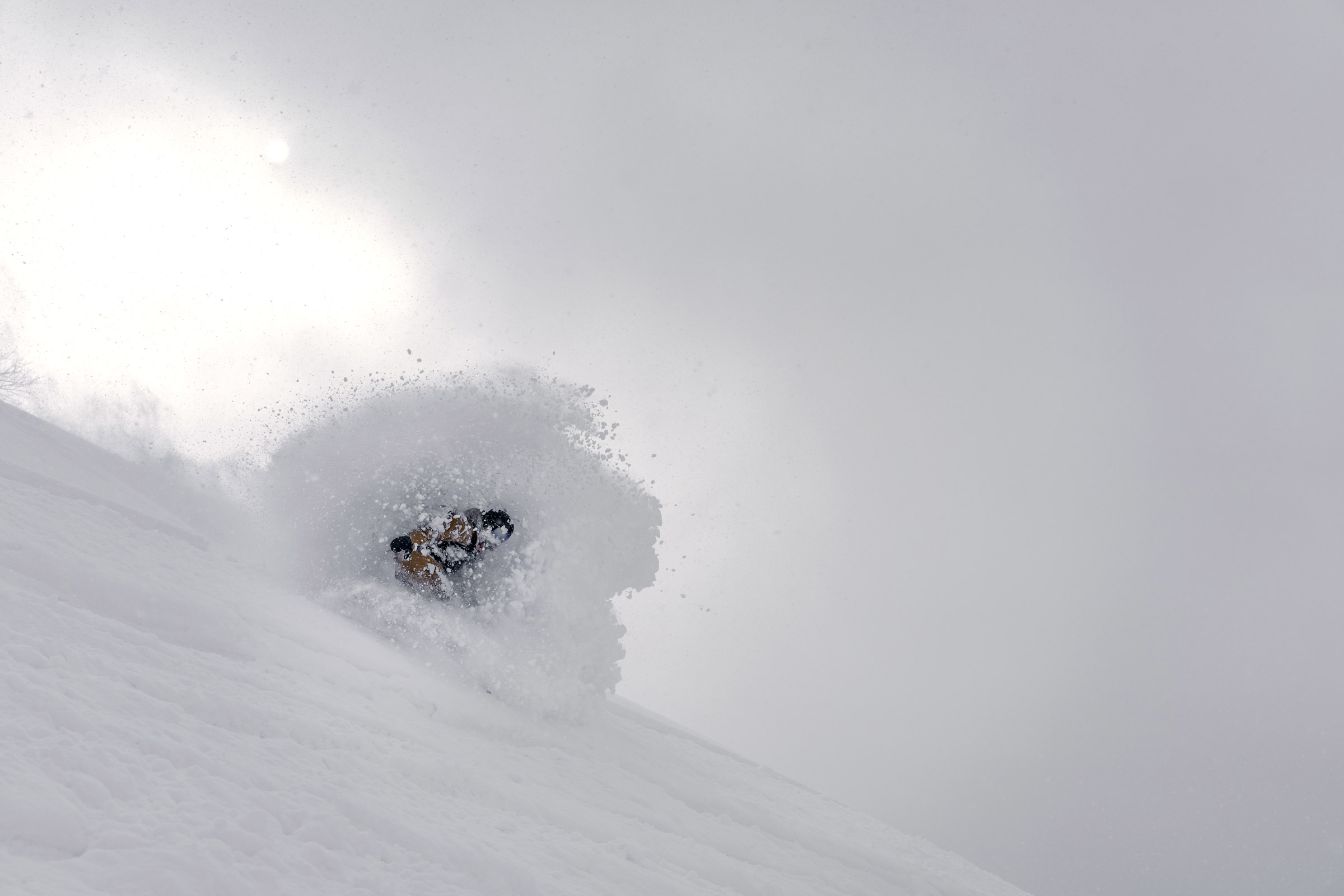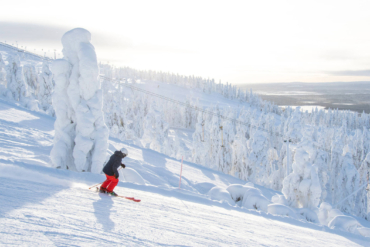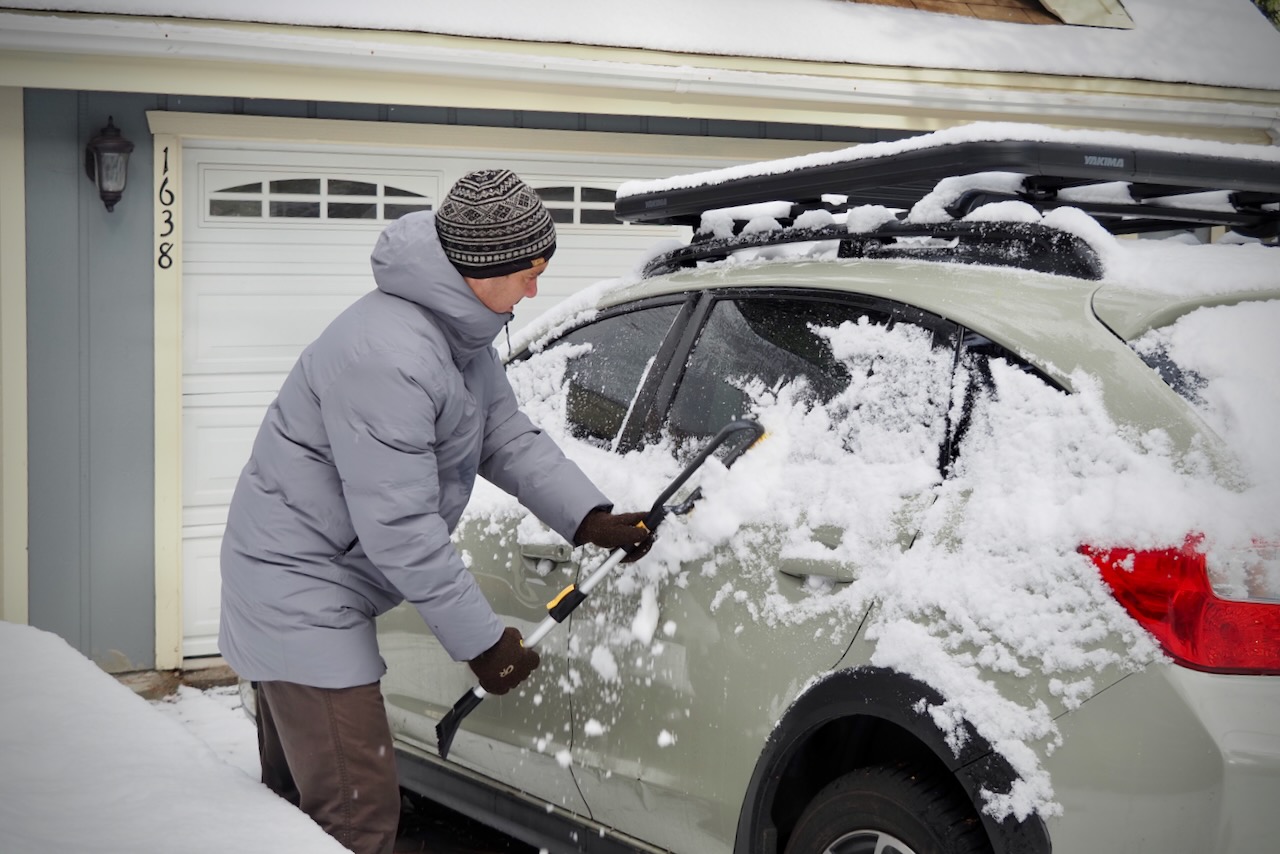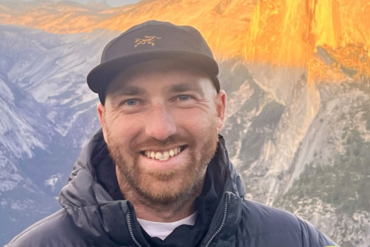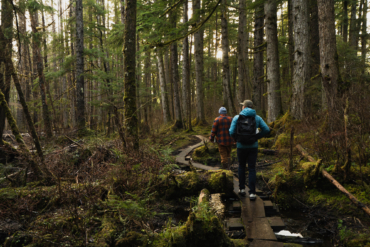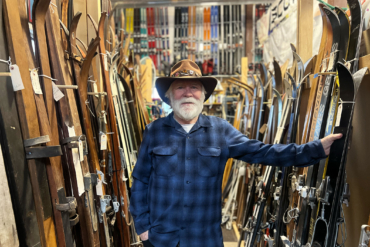If you ask backcountry skiers and splitboarders to pick their dream destination for a ski trip, their answers will invariably cluster around a few time-tested places. Alaska, Japan, and British Columbia are sure to come up, as are the Alps and the Andes. But Sweden? No way, dude.
Up until last spring, I would’ve thought along the same lines. But then I sampled a few of the many drool-inducing lines in Swedish Lapland on a hut trip with Stranda Snowboards high in the Arctic Circle last March. And my perspective has forever shifted.
This northern shred destination offers backcountry goers stunning, uncrowded peaks and stoke-worthy terrain that make it well worth the trek … no matter how many layovers are on your itinerary.
You know that feeling when you can’t shake the memory of a truly epic trip of a lifetime? That’s why I had to share a few tales from the Swedish skintrack. I’ll talk bootpacks, touring, terrain, as well as insights on travel and logistics. For skiers and splitboarders looking to make a pilgrimage to the land of Northern Lights — or those simply open to doing so — take it from me, and go for it.
Read The Best Splitboards for Men and Women buyer’s guide.
An Arctic Welcome
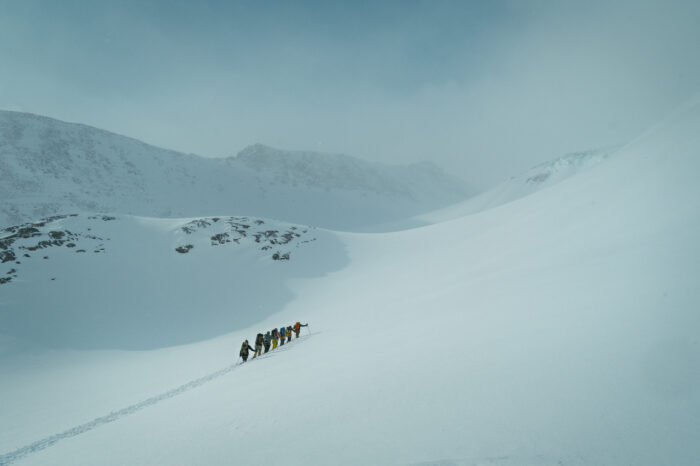
The evening skies darkened over Sweden’s Kebnekaise Massif, so I pulled out my phone to capture the moment, with my guide Matti Saapunki, skinning through the foreground. I managed to snap a photo, but my fingers instantly froze up.
The beauty of the range became secondary as I donned heavy gloves and liners, two face masks — and still the Scandinavian winds sent icy daggers slashing through my GORE-TEX armor.
The going was hard work, too; the relentless winds had compressed the top of the snowpack into a breakable, styrofoam-like crust. I don’t think I’ve ever been that cold on the skintrack.
I can’t lie: there was a bit of second-guessing on that frigid slog. Back home in Tahoe, we were in the midst of a historic winter. Why wasn’t I sleeping in the comfort of my home and shredding backyard powder every day? Why had I taken three flights, a bus, and a literal sleigh ride to get to this remote basecamp in Sweden?
But then we crested the ridge, and my home for the week danced into view: the Tarfala Hut. Perched on a knoll in the Tarfala Valley, this outpost has a full kitchen, outhouse, no running water (you’ve got to haul it up from the lake), and, most critically after a full day of touring, an epic sauna. It sleeps up to 25 people and is a perfectly positioned base camp for touring missions.
Its windows glowed bright, as if in defiance of the winds hammering the valley and cloaking the surrounding peaks in swaths of spindrift. This was why. We booked it to the hut, kicked off our gear, and hustled inside. A crew of splitboarders from Stranda, guided by IFMGA guide Fred Buttard, were waiting. (I arrived a day late after having to direct a splitboard test in the States.)
Luckily, they’d saved me a bowl of reindeer stew. After dinner, I crawled into my bunk, stoked for the morning to come. As I drifted off to sleep, the wind punctuated by my snoring hut-mates, I smiled and wondered. What lines had those restless winds been hiding?
What to Expect in Swedish Lapland
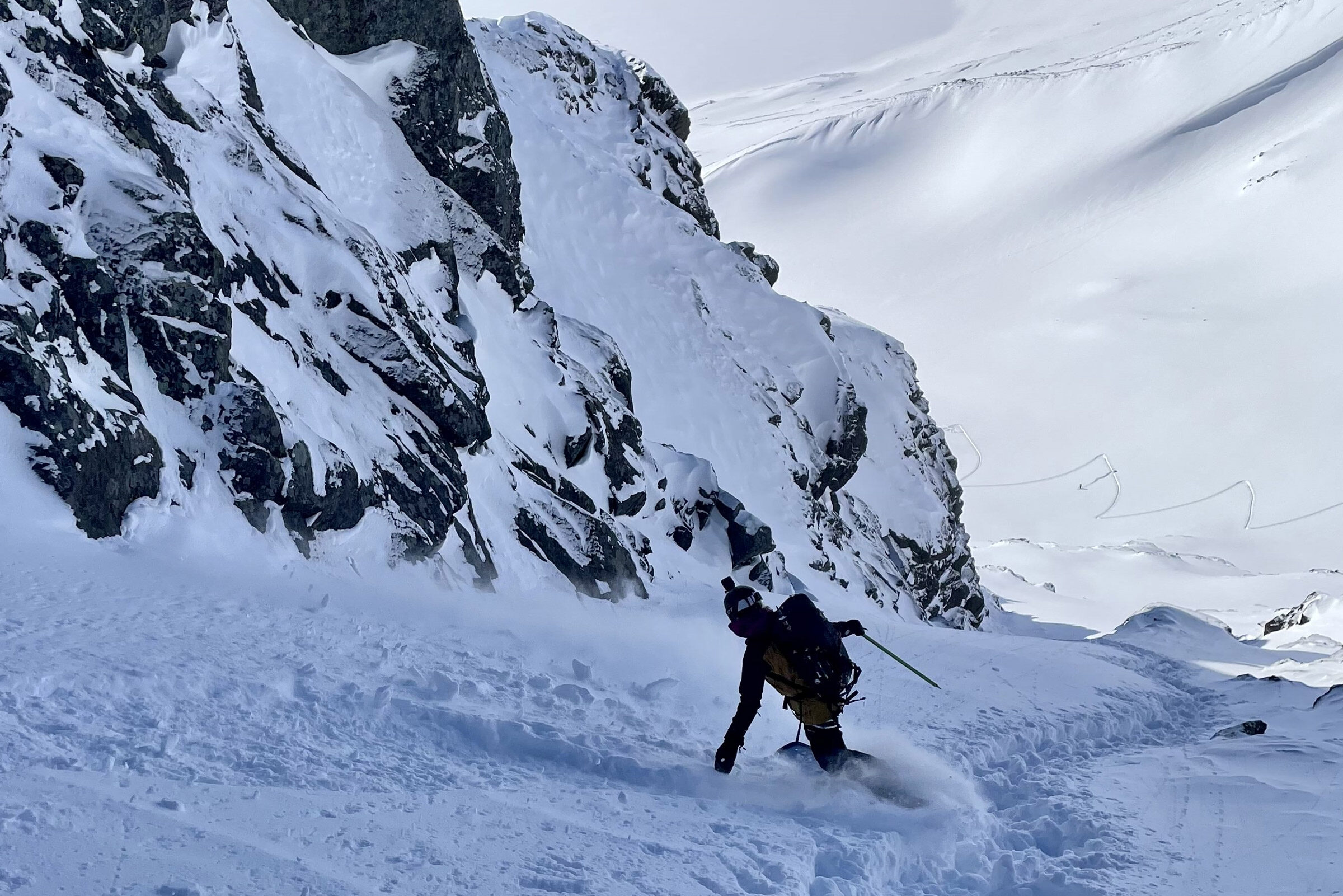
Zephyr didn’t let up that first morning, but graybird skies turned blue, and I got my first real glimpse of the Tarfala Valley and the Kebnekaise Massif. Beautiful is a woefully inadequate descriptor. The range was a freerider’s dream playground. There were rocky peaks with couloirs slicing down their flanks, mellow, glacial pitches and spicy faces everywhere I looked.
Once we started skinning, snaking from the expansive valley up a rolling glacier that seemed straight out of Alaska or the Alps, it became abundantly clear that there were months’ — if not seasons’ — worth of lines a snowball’s throw from the hut.
And best of all? Aside from the lines already laced by our crew, there weren’t any tracks or fellow skiers in sight.
The days that followed were some of the best of my season, which is saying something. Last winter was easily the best of my life, highlighted by historic Tahoe conditions, a stellar heli-trip with Bella Coola Heli Sports in BC, and a trip of a lifetime to Hokkaido, Japan. Sweden was right there at the top of my list, and 2 days in particular stand out.
Memorable Terrain, Top-Notch Lines
The first was a brutally cold, bluebird day that involved tackling a pair of neighboring couloirs. We bootpacked up the gut of the first chute, turning around after a wind slab upped the hazard. After hop-turning through the choke, we enjoyed fast, fluid powder turns in the apron.
One reason I really appreciated riding with our guide Fred Buttard is that he genuinely understands the mechanics of snowboarding in the backcountry. And, he’s good at making sure he’s minimizing transitions, and generally setting an efficient, splitboarder-oriented line while guiding snowboarders.
This isn’t always the case, especially for old-school guides who aren’t used to riding with snowboarders. Needless to say, I’m a fan, and I’m stoked to get out and ride with him again this winter.
We opted for a cruisier, surfy, windlip-laden lap next on the other side of the valley, and then skinned back up for a third run, tagging the chute next door. We finished off in a fun surfy zone, as the sun set over the Kebnekaise Massif.
Soon after, rapidly dropping temperatures sent us scurrying for the coziness of the hut. Just as we were getting ready for bed someone shouted, “The aurora!” We all stumbled out into the night, oblivious to the cold. Our jaws dropped as ribbons glowed and whirled through the inkwell sky.
These northern latitudes are far from light pollution and, while the aurora borealis are never guaranteed, there’s a good chance you’ll catch a glimpse of nature’s finest light show in this zone. We were blessed with a couple of nights of northern lights on my trip, and it was a highlight of the adventure.
And keep in mind as spring rolls on, your chances of seeing the aurora diminish slightly, but the days get longer. For instance, Kiruna’s sunset on March 16, the first day of my trip, was at 5:43 p.m. By the end of the week, sunset jumps to 6:08 p.m. If you end up coming a month later, the sun doesn’t go down til after 9 p.m. (meaning ripe potential for evening ski sessions). It was an ethereal cherry on top of a perfect day in the Arctic.
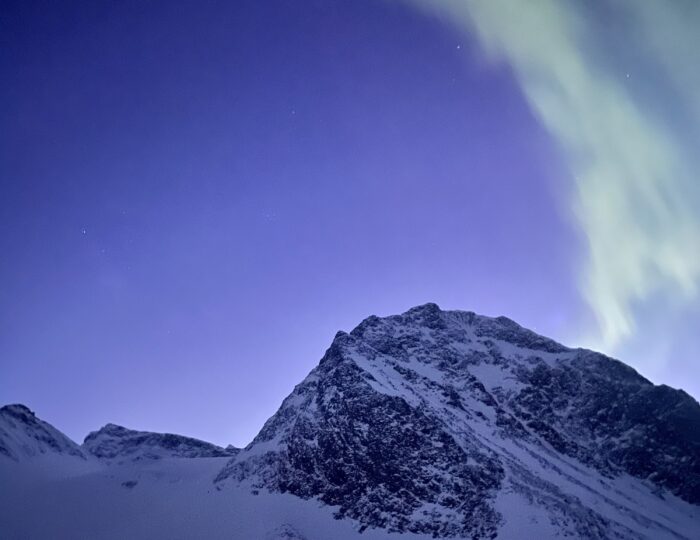
The second day that I’ll remember most was our exit. We left at dawn, embarking on a roundabout tour from the Tarfala Hut back to the Kebnekaise Mountain Station. Half of the group went to climb the Kebnekaise, the highest mountain in Sweden and a more technical adventure, while the rest of us went in search of more powder.
As we were party-lapping out of the valley, I caught a glimpse of a steep, unridden, low-elevation face dotted with cliffs above us. Mats Drougge, perpetually stoked founder of Stranda, and the orchestrator behind this trip smiled and said, “If you guys want to ride that, I’ll shoot it!”
Tapping into a reserve of energy I didn’t know we had, a couple of us rode the face. It was steep and deep, the snow stable and crystalline. I made a few turns through the chute, lined up a cliff drop, and skittered through the landing (I blame my hut-trip-hammered legs). Sketchy landings aside, it was the line of the trip for me.
Remote Touring Means Remote Travel
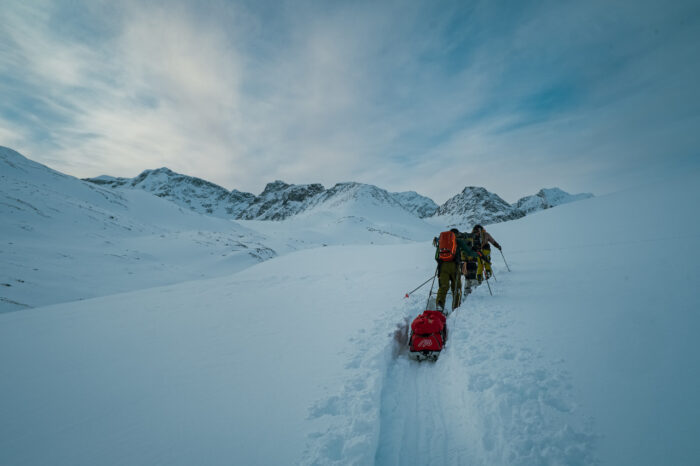
If you’re visiting the Kebnekaise Mountain Station or the Tarfala Hut, your trip likely kicks off in Kiruna. It is possible to take an overnight train from Stockholm, a rad option if you’re not in a hurry. If PTO is in short supply — or there’s an overabundance of stoke — fly directly to Kiruna. It’s one of the smallest airports I’ve been to, but there are four daily flights to Stockholm.
From Kiruna, you’ll want to either drive, take a taxi, or take the bus from town to Nikkaluokta. Once you’re at Nikkaluokta — a charming outpost at the end of the road — you’ll take a 19km snowmobile-pulled sleigh ride to arrive at Kebnekaise or your destination of choice.
Throughout my short stint in Swedish Lapland, we must’ve run through half of the Inuit’s infamously large lexicon for snow. We rode everything from blower pow and corn to bulletproof hardpack and styrofoam windboard; plan on packing skis or a board that is versatile enough to handle it all.
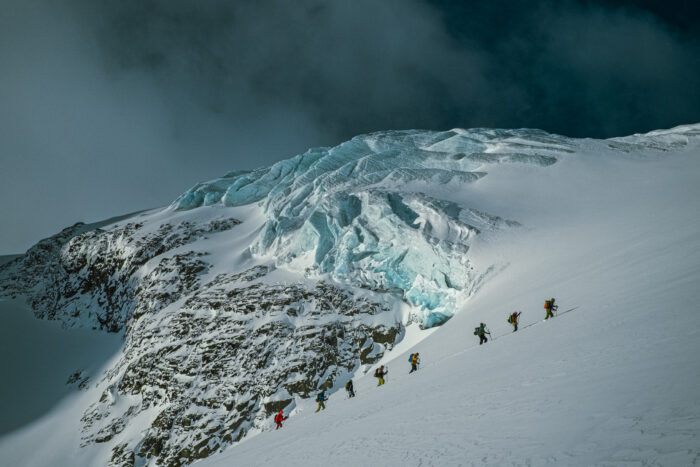
Within a snowball’s throw from the Tarfala Hut, you can be touring mellow glacial pitches, steep gnarly couloirs, and rowdy, big mountain lines. And in terms of weather, I experienced it all — hammering snow, whipping winds, and brutal cold. Alluring to both skier and photographer, this terrain is truly electric.
This just added to the experience, if you ask me. The more extreme elements made both our bluebird ski days and our relaxing time in the sauna all the more gratifying.
Tips for Planning Your Own Trip to the Arctic Circle
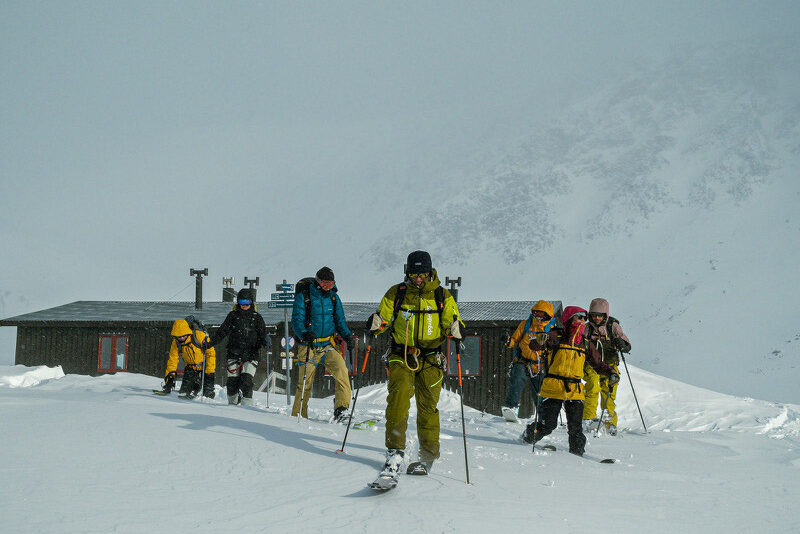
It depends on the snow forecast each season, but generally, March to mid-May is the best time to visit. March and April will offer the most potential in terms of ideal skiing conditions. Here are a few trips to put on our radar:
- Stranda Splitboards is hosting its Swedish Lapland Tarfala Hut trip again this spring, March 16-23.
- Upguides is partnering up with Stranda Snowboards to host the first-ever Arctic Split Fest, April 9-12 in Norway’s Finnmark region.
- Upguides offers a Splitboard Tour in Finnmark from April 7 to 14 that includes guided days before and after the festival.
The terrain alone you’ll get to explore during the fest is worth skiing in Northern Norway. The fjord-side peaks look beyond picturesque, and some zones are only accessed by sea kayak or boat.
“There’s so much terrain, you wouldn’t believe it,” said Buttard (like we weren’t already convinced). Plus, there’ll be avalanche safety talks, technical workshops on rope skills and rescue, film showings, demos, and concerts.
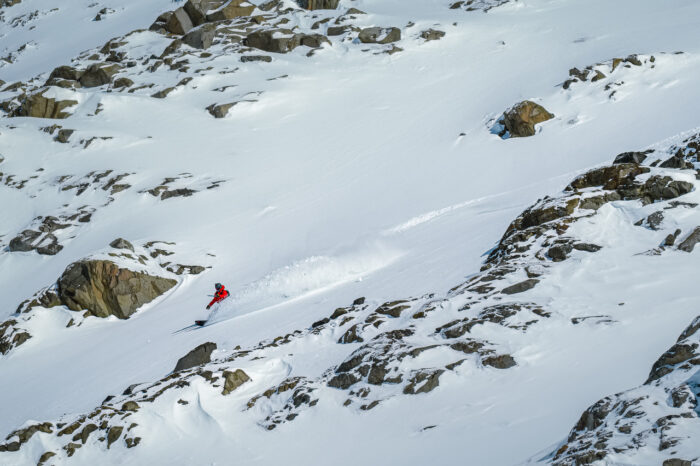
While Tarfala and Finnmark are a little off the beaten path, if you’re looking for a more classic Arctic target, Lofoten, Norway, is another good destination. That’s especially if you want ski or splitboard touring. Famous for its fjords and steep, easily accessible alpine terrain, Lofoten is on many backcountry bucket lists — mine included.
Though, now that I’ve discovered the backcountry terrain in Sweden, it’ll be hard to beat.
